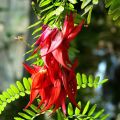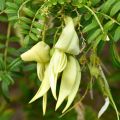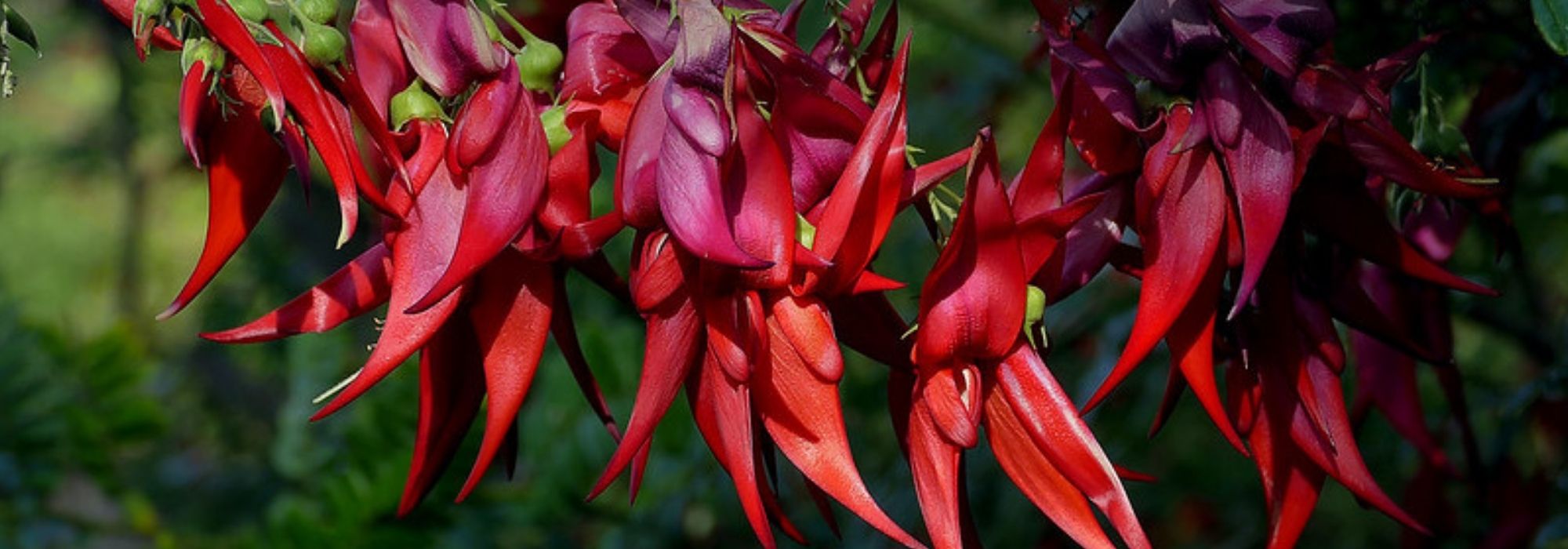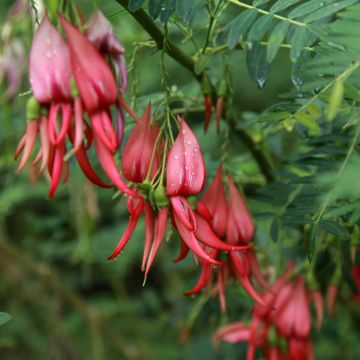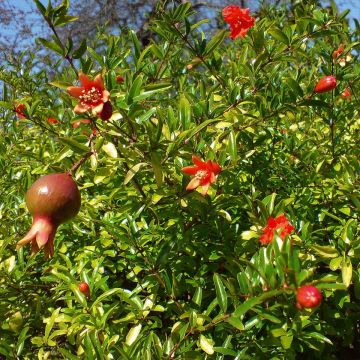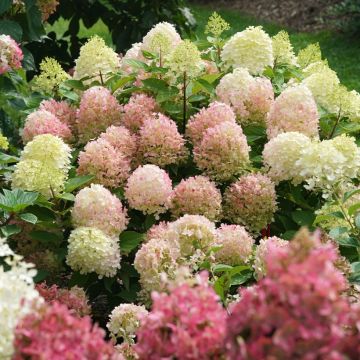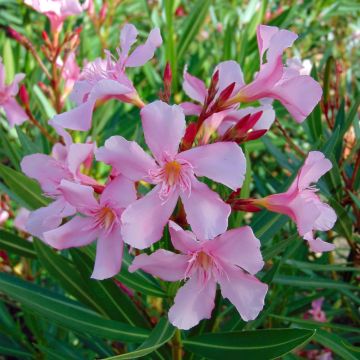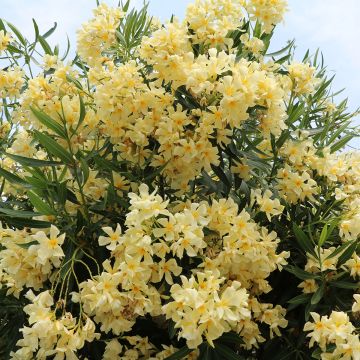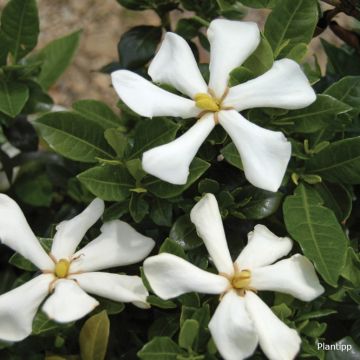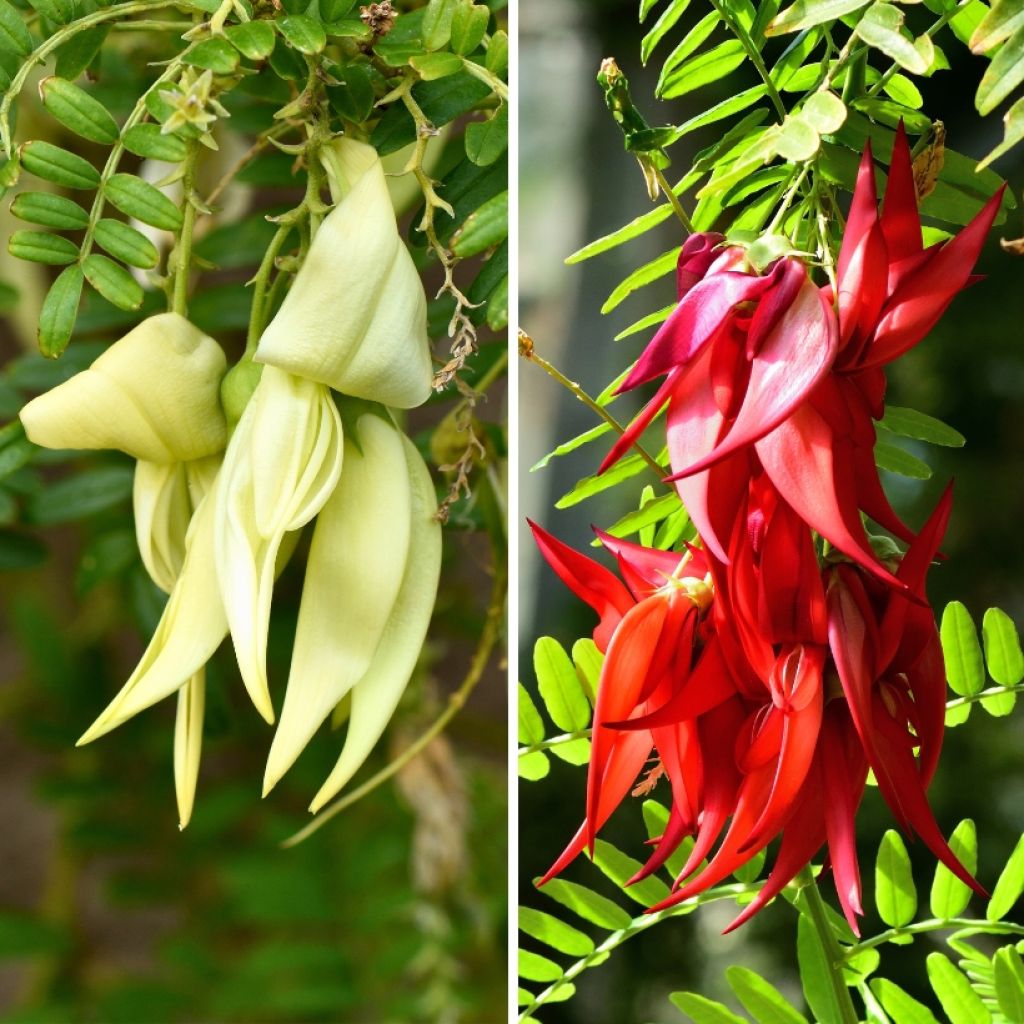

A pair of exotic Clianthus
A pair of exotic Clianthus
Clianthus puniceus Kaka King, White Heron
Kaka beak, Parrot's Beak, Lobster Claw, Parrot's Bill
Special offer!
Receive a €20 voucher for any order over €90 (excluding delivery costs, credit notes, and plastic-free options)!
1- Add your favorite plants to your cart.
2- Once you have reached €90, confirm your order (you can even choose the delivery date!).
3- As soon as your order is shipped, you will receive an email containing your voucher code, valid for 3 months (90 days).
Your voucher is unique and can only be used once, for any order with a minimum value of €20, excluding delivery costs.
Can be combined with other current offers, non-divisible and non-refundable.
Home or relay delivery (depending on size and destination)
Schedule delivery date,
and select date in basket
This plant carries a 24 months recovery warranty
More information
We guarantee the quality of our plants for a full growing cycle, and will replace at our expense any plant that fails to recover under normal climatic and planting conditions.
Would this plant suit my garden?
Set up your Plantfit profile →
Collection items (2 plants)
Description
This pair of Clianthus brings together two magnificent varieties and will delight enthusiasts of exotic and unusual plants. Clianthus puniceus is a bush that owes its name to its large flowers, which resemble the beak of a parrot or the claws of a lobster. It is a tender plant of great ornamental value that can only be grown in the ground in the mildest regions. Everywhere else, it makes a beautiful terrace or balcony plant, to be stored away in winter. Its long woody climbing stems bear finely cut leaves with silky undersides, and it flowers from March to May, sometimes until September depending on the climate.
This duo consists of:
1 Clianthus puniceus 'Kaka King': flowering in a very bright red
1 Clianthus puniceus 'White Heron': flowers in pure white
To successfully grow your Clianthus, give them sunlight and a mild winter, rather chalky, fertile soil, well-drained but moist in summer. Hardy down to about -6.5°C in well-drained soil and sheltered location, they tolerate a wide range of soils, including alkaline ones, as long as they remain sufficiently moist in summer. They are shrubs made up of long, very flexible stems that can reach 3m, which are best trained on a trellis or a teepee. Otherwise, they will form a tall and wide bushy mass of 2 metres in the ground. In containers, they will often remain smaller.
Plant one Clianthus per square metre. A mixture of loam, compost, and gravel will be suitable. The growing substrate should always remain slightly moist, especially from spring to the end of summer. In autumn, bring your potted plants indoors to a bright and cool room, with a maximum temperature of 10°C. In winter, watering should be reduced, without allowing the substrate to completely dry out.
In the ground, you can associate the Clianthus from this duo with exotic shrubs such as Abutilon 'Pink Charm' with pink flowers, Polygala myrtifolia, or even a Strelitzia reginae bird of paradise.
Plant habit
Flowering
Foliage
Botanical data
Clianthus
puniceus
Kaka King, White Heron
Fabaceae
Kaka beak, Parrot's Beak, Lobster Claw, Parrot's Bill
Donia punicea
Cultivar or hybrid
Other Clianthus - Kakabeak
View all →Planting and care
Plant Clianthus puniceus in open ground in regions where winter temperatures do not drop below -6°C for short periods, preferably in spring. Plant it in ordinary, well-drained soil, stony or enriched with gravel, preferably limestone or basic, remaining moist in summer. Choose a sunny exposure or partial shade in the South, sheltered from the wind. It is undemanding in terms of soil and it needs water during its growth and flowering period. Watch out for attacks by slugs and snails that are fond of the young shoots and leaves.
Cultivation in pots: prepare a mixture of horticultural compost, garden soil and gravel in equal parts. Place a layer of gravel at the bottom of your pot to ensure the excess water drains during watering. Water regularly throughout the growing season, reduce water inputs in winter, making sure the soil does not completely dry out. Fertiliser inputs are beneficial, but should not be too rich, especially in nitrogen. Store your Clianthus puniceus during periods of extreme cold in a very bright, minimally heated room, protected from frost. Prune sparingly, if necessary, just after flowering.
Repotting every 3 years or when the plant is too large for its pot will suffice. The roots do not appreciate being disturbed, so move your Clianthus to a larger pot without disturbing the roots.
Planting period
Intended location
Care
Planting & care advice
This item has not been reviewed yet - be the first to leave a review about it.
Similar products
Haven't found what you were looking for?
Hardiness is the lowest winter temperature a plant can endure without suffering serious damage or even dying. However, hardiness is affected by location (a sheltered area, such as a patio), protection (winter cover) and soil type (hardiness is improved by well-drained soil).

Photo Sharing Terms & Conditions
In order to encourage gardeners to interact and share their experiences, Promesse de fleurs offers various media enabling content to be uploaded onto its Site - in particular via the ‘Photo sharing’ module.
The User agrees to refrain from:
- Posting any content that is illegal, prejudicial, insulting, racist, inciteful to hatred, revisionist, contrary to public decency, that infringes on privacy or on the privacy rights of third parties, in particular the publicity rights of persons and goods, intellectual property rights, or the right to privacy.
- Submitting content on behalf of a third party;
- Impersonate the identity of a third party and/or publish any personal information about a third party;
In general, the User undertakes to refrain from any unethical behaviour.
All Content (in particular text, comments, files, images, photos, videos, creative works, etc.), which may be subject to property or intellectual property rights, image or other private rights, shall remain the property of the User, subject to the limited rights granted by the terms of the licence granted by Promesse de fleurs as stated below. Users are at liberty to publish or not to publish such Content on the Site, notably via the ‘Photo Sharing’ facility, and accept that this Content shall be made public and freely accessible, notably on the Internet.
Users further acknowledge, undertake to have ,and guarantee that they hold all necessary rights and permissions to publish such material on the Site, in particular with regard to the legislation in force pertaining to any privacy, property, intellectual property, image, or contractual rights, or rights of any other nature. By publishing such Content on the Site, Users acknowledge accepting full liability as publishers of the Content within the meaning of the law, and grant Promesse de fleurs, free of charge, an inclusive, worldwide licence for the said Content for the entire duration of its publication, including all reproduction, representation, up/downloading, displaying, performing, transmission, and storage rights.
Users also grant permission for their name to be linked to the Content and accept that this link may not always be made available.
By engaging in posting material, Users consent to their Content becoming automatically accessible on the Internet, in particular on other sites and/or blogs and/or web pages of the Promesse de fleurs site, including in particular social pages and the Promesse de fleurs catalogue.
Users may secure the removal of entrusted content free of charge by issuing a simple request via our contact form.
The flowering period indicated on our website applies to countries and regions located in USDA zone 8 (France, the United Kingdom, Ireland, the Netherlands, etc.)
It will vary according to where you live:
- In zones 9 to 10 (Italy, Spain, Greece, etc.), flowering will occur about 2 to 4 weeks earlier.
- In zones 6 to 7 (Germany, Poland, Slovenia, and lower mountainous regions), flowering will be delayed by 2 to 3 weeks.
- In zone 5 (Central Europe, Scandinavia), blooming will be delayed by 3 to 5 weeks.
In temperate climates, pruning of spring-flowering shrubs (forsythia, spireas, etc.) should be done just after flowering.
Pruning of summer-flowering shrubs (Indian Lilac, Perovskia, etc.) can be done in winter or spring.
In cold regions as well as with frost-sensitive plants, avoid pruning too early when severe frosts may still occur.
The planting period indicated on our website applies to countries and regions located in USDA zone 8 (France, United Kingdom, Ireland, Netherlands).
It will vary according to where you live:
- In Mediterranean zones (Marseille, Madrid, Milan, etc.), autumn and winter are the best planting periods.
- In continental zones (Strasbourg, Munich, Vienna, etc.), delay planting by 2 to 3 weeks in spring and bring it forward by 2 to 4 weeks in autumn.
- In mountainous regions (the Alps, Pyrenees, Carpathians, etc.), it is best to plant in late spring (May-June) or late summer (August-September).
The harvesting period indicated on our website applies to countries and regions in USDA zone 8 (France, England, Ireland, the Netherlands).
In colder areas (Scandinavia, Poland, Austria...) fruit and vegetable harvests are likely to be delayed by 3-4 weeks.
In warmer areas (Italy, Spain, Greece, etc.), harvesting will probably take place earlier, depending on weather conditions.
The sowing periods indicated on our website apply to countries and regions within USDA Zone 8 (France, UK, Ireland, Netherlands).
In colder areas (Scandinavia, Poland, Austria...), delay any outdoor sowing by 3-4 weeks, or sow under glass.
In warmer climes (Italy, Spain, Greece, etc.), bring outdoor sowing forward by a few weeks.






























